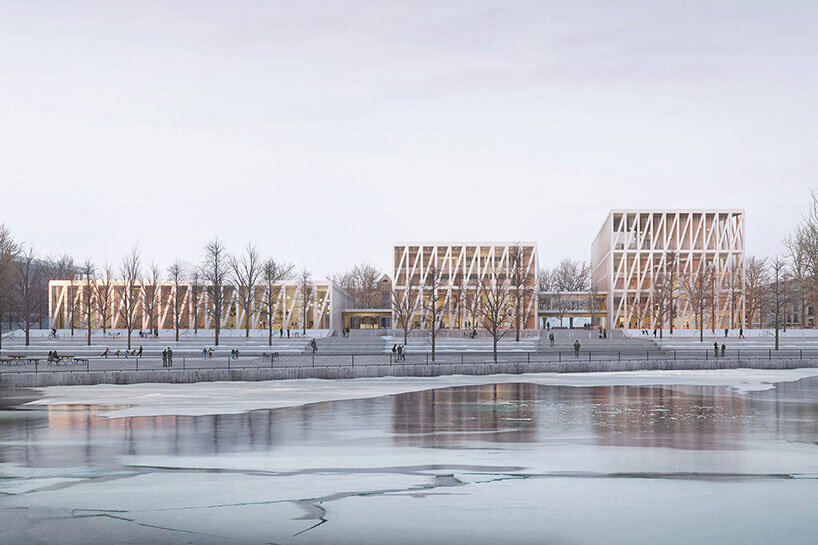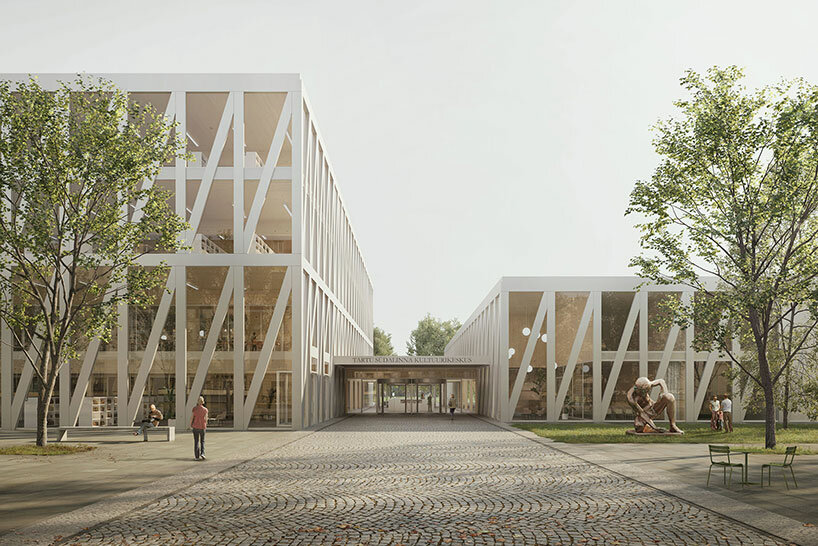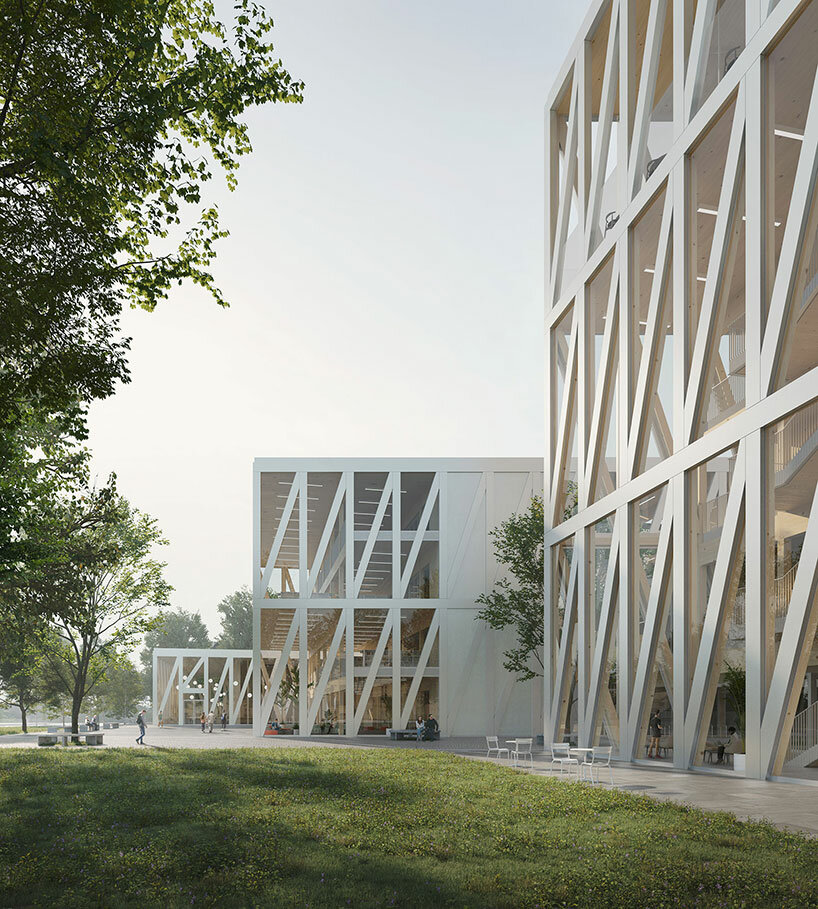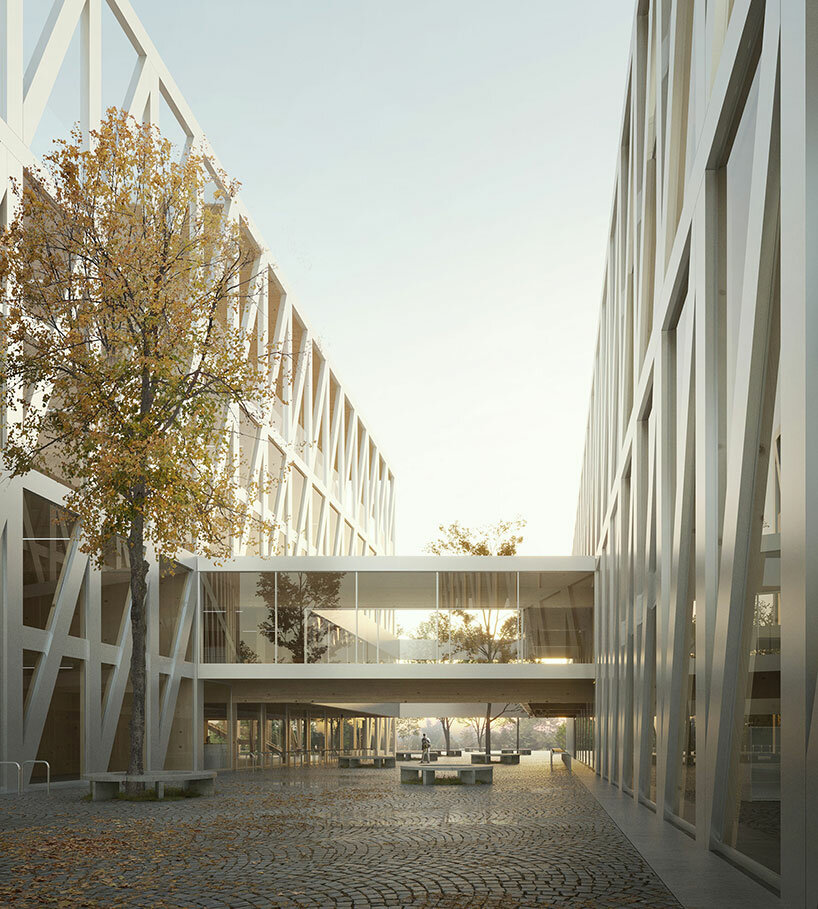tartu cultural centre: luca poian forms proposes a trio of timber pavilions in estonia
luca poian forms designs for estonia
Luca Poian Forms presents its Tartu Downtown Cultural Centre, a proposal for the southern Estonian city of Tartu. The project is planned alongside the city’s ongoing adaptations to present-day social and environmental changes, and is designed to support the increasingly progressive and diverse community. Led by architect Luca Poian, the team celebrates the city’s legacy and layered past, which can be read through its urban fabric, by creating new urban connections through the center’s masterplan.
 visualizations © Filippo Bolognese Images | @filippobolognese.images
visualizations © Filippo Bolognese Images | @filippobolognese.images
linking the city streets to the Riverbank
The architects at Luca Poian Forms plan the Tartu Cultural Centre as a threshold between the city and the River Emajõgi, creating a fluid new connection to the riverbank. Three interconnected masses align with the profile of the riverbank while being flanked by service entrances along Uueturu Street and Poe Street. This strategic positioning ensures easy logistical connections to the city’s transportation network while embracing the porosity provided by two prominent pedestrian passages.
By extending across the newly integrated Vabaduse Avenue to the river’s shores, the site creates an inclusive and walkable urban plaza. The design welcomes a dynamic programmatic flow, gradually adjusting the volumes’ footprint and elevation to accommodate different functions. The highest point of the Cultural Centre features a rooftop cinema and restaurant, opening up sweeping views across the historic city.
 the project will be a gathering place for Tartu’s increasingly progressive and diverse community
the project will be a gathering place for Tartu’s increasingly progressive and diverse community
a Pavilion of Discovery in tartu
At the heart of the project is a central structure envisioned by Luca Poian Forms as a pavilion within a new park, inviting users from all parts of Tartu. This structure houses the Main Library above ground and the Museum below ground. The interior spaces revolve around a central, triple-story atrium, promoting porosity, lightness, and circulation ease.
The Main Library caters to the city’s diverse population, offering various spaces such as group study rooms, independent work areas, an internet classroom, and rentable recording studios. It serves both as a traditional library and a modern, technology-focused hub, providing a rich program of activities beyond browsing book stacks. The ground floor emphasizes social interaction, play, and learning, while the upper levels offer academically focused spaces for research, book collections, and quiet reading.

the project maximizes the spread of daylight through uniform glazing on the facades
sustainable design and material efficiency
The design of the new Cultural Centre breaks away from tradition, aiming to provide a welcoming and flexible environment for Tartu’s diverse community. It showcases innovative construction approaches, utilizing a hybrid structure comprising glulam frames with cross-laminated timber (CLT) slabs and core. This design choice supports vast open learning and workspaces that align with the project’s programmatic goals. The absence of structural internal partition walls allows for easy adaptation as future demands change.

the hybrid structure comprises glulam frames with cross-laminated timber (CLT) slabs and core
To maintain a comfortable and minimal internal environment, the design focuses on material efficiency and passive solutions. The project maximizes the spread of daylight through uniform glazing on the perimeter facades and the multi-story atrium of the Main Library. By enabling the even distribution of daylight throughout the spaces, artificial lighting can be used sparingly, reducing electrical consumption and emissions. The project incorporates optimally oriented photovoltaic panels on each roof, contributing significantly to renewable electrical power generation.
 the pavilions shelter a walkable plaza
the pavilions shelter a walkable plaza
To condition the interiors, the design employs solar and occupant heat gains to reduce the energy needed for fresh air. Mechanical ventilation equipped with efficient thermal fabrics maximizes heat reclamation and system efficiency. In the absence of a viable district heating and cooling network, site-specific heat pumps, including hydro and geo-thermal options, could be integrated to provide an excellent heating and cooling source. This holistic approach to sustainability ensures that the Cultural Centre sets a powerful agenda, resulting in an honest design without excess, where each component is designed to be as efficient as possible.


